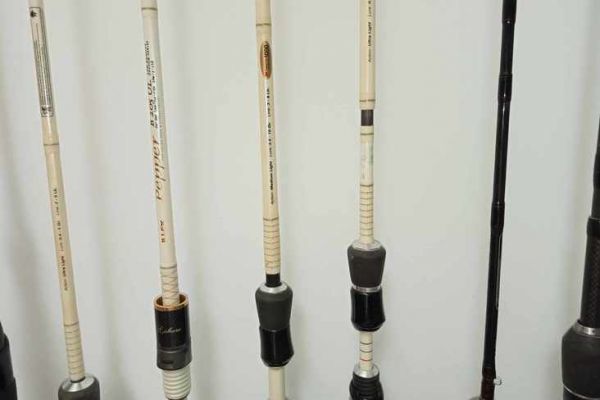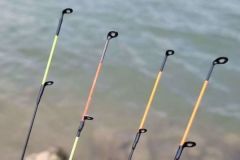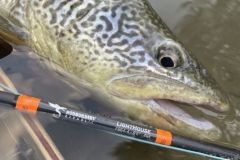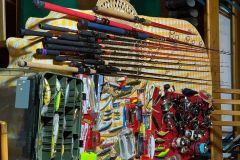Fishing rods must have many features to satisfy anglers. They must be supple, strong, sensitive, and capable of casting far yet light and comfortable, and of fighting a fish! To achieve this, they must be made of a material that is highly resistant to traction. Here are the materials that meet these precise specifications.
Bamboo
Bamboo is a wood native to Asia. While it is possible to use bamboo stems directly, the first manufactured fishing rods were made from split bamboo. In other words, several sets of rods were assembled to form the body of the rod. Triangular in cross-section, when assembled together they form a rod body with a hexagonal cross-section.
Bamboo, like many woods, is considered an anisotropic composite material in terms of mechanical properties. It is made up of fibers often oriented in the same direction in a rigid matrix, which confers different properties depending on whether it is stressed in the direction of the fibers or not. At the time, Pezon et Michel split bamboo rods were renowned the world over (until around the 1960s).
While the material remains effective, it's the cost of manufacture that's holding manufacturers back, and the fact that it's still produced by hand.
Before the advent of fibreglass, some rods were even made of tubular steel!
Modern composite materials
Then came rods made of fibers in a resin matrix.
And it was another Frenchman who revolutionized fishing. Monsieur Henry Dubois (paradoxically, and for pun's sake, Monsieur Dubois is going to put the brakes on fishing with bamboo rods) invented and developed the first fiberglass rods in the 1970s. Fiberglass, on the other hand, was patented earlier, in 1930.
The first composite rods were made of fiberglass, then aramid. Fiberglass is very strong and fairly light. It can stretch enormously and is very elastic.
Aramid fiber, better known under the trade name Kevlar (kevlar is a registered trademark) , is especially resistant to shearing. It was often used for telescopic rods, which were still relatively fragile. In fact, Kevlar enabled the creation of tubular blanks resistant to shock and shear, whereas cheap fiberglass blanks were often solid blanks.
Kevlar is still often used with carbon fibre for rod tips.
Then came carbon fiber. This black fibre is very strong and light. Its very high production cost initially reserved it for very high-end rods. However, as the industry progressed, costs fell and carbon fiber rods became widely available.
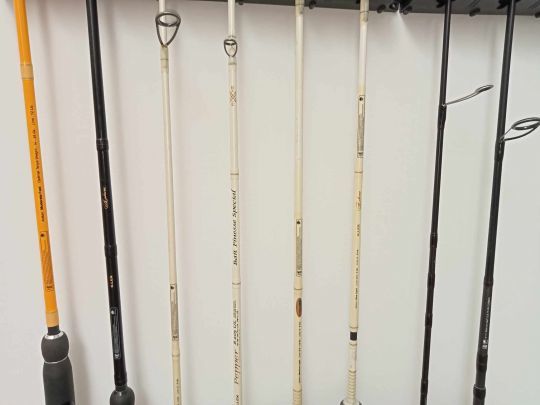
The resin matrix is often epoxy or polyurethane resin.
Some brands stand out by offering rods with a boron fiber or even carrot fiber section!
Rod handles
Rod handles have also come in a variety of materials. Cork is still very much in vogue, thanks to the comfort it provides.
EVA polyether foam is also widely used for its lightness and the look it gives rods.
Some canes also feature wooden knobs for a refined, aesthetic look.
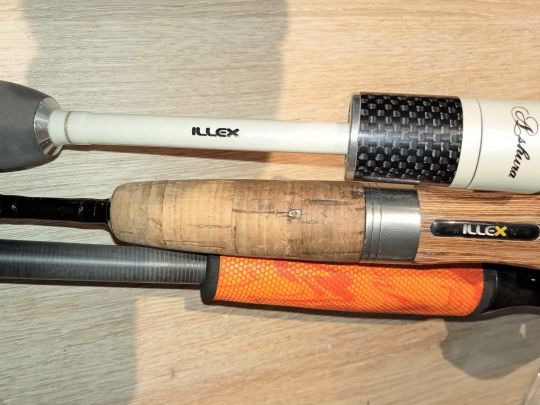
Cane rings
Most rod guides are made of steel. They can also be made of titanium.
Some brands, such as Daiwa, offer carbon fibre rings. In any case, they are light and strong.
They must be fused with the body of the rod, the blank. Today, the line passage is mainly made of ceramic, which is highly resistant to abrasion and the use of braided line. What's more, they offer incomparable glide for long, accurate casts.
